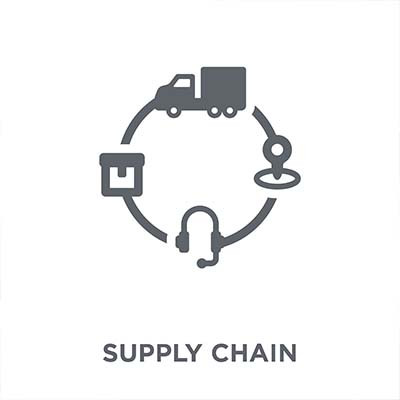Many of today’s businesses span continents. That’s not an exaggeration. With faster Internet speeds fueling remote workforces, some businesses choose to strategically use workers from all over the globe to create and sell their products or services. In today’s blog, we’ll discuss some of the adjustments and alterations that you need to make when relying on truly remote teams.
k_Street Consulting, LLC Blog
It can be difficult staying productive with all the things that happen day-in and day-out around your business. When your team is productive, it helps you stay focused and organized, and it can make a big difference in how successful you are. This week we break down just how keeping productivity levels high can make or break a business.
Collaboration is at the heart of any effective business. Most organizations today are trying to make the most of their limited resources, and one of the ways to do this is with a solid collaboration strategy. Here’s how you can do the same to avoid siloing tasks and squandering your workforce’s potential.
Your business works with a lot of vendors. Each of these vendors requires your time, energy, and resources. Do you have the assets to handle all of them yourself, or would it all be better spent elsewhere on more profitable tasks and projects? Today, we’ll highlight your business’ vendor management options.
While your business might last into the near future, your IT is more challenging to upkeep and preserve over time. You’ll have to consider reworking and restructuring your infrastructure to ensure that it stands the test of time. Let’s review some warning signs that it might be time to do just that.
Productivity is the measure of which an employee and a business is judged by, and for that reason, when productivity starts to lapse at an individual or organizational level it needs to be addressed immediately. In today’s blog, we’ll go through some of the problems that an organization can see when productivity drops.
No matter your industry, size, or business model, satisfying your customers is crucial. Your business' survival depends on your ability to do this effectively.
To achieve this, it is essential to leverage every opportunity to deliver for your audience. One way to do this is through modern business technology, such as customer relationship management (CRM). Let's explore what a CRM is and why it's beneficial.
Many business owners considered allowing their employees to work from home like opening Pandora’s box; once opened, there was no going back. Unfortunately, for these administrators, they were faced with the very real prospect of losing their business if they didn’t allow it. Millions of people started working from home in 2020 as a result of the COVID-19 pandemic, but now that public fear has diminished, how have companies reacted? Let’s discuss some remote work statistics to get an answer.
Technology frustrations can cause major setbacks for today’s businesses. IT challenges of all kinds can disrupt operations and impact productivity. Fortunately, managed IT services can help solve these common business IT headaches. Therefore, businesses can access a team of experts ready to tackle these issues head-on by outsourcing their IT management to a managed service provider.
Effective teamwork is indispensable for business success. Collaboration stands out as an extremely important consideration, yet devising a strategy that expedites project completion and enhances service delivery poses challenges. This week, we get into modern collaboration practices and how technology can help you improve collaboration.
You might have noticed that some of your younger workers are leaving your business much earlier than you might expect them to. This could be because of a phenomenon called “shift shock,” which examines employee engagement and satisfaction. Let’s consider how shift shock could potentially harm your business.
The entire premise of managed IT services is that they can save your business money, but in what specific ways does working with us make your budget more predictable? It’s really quite simple, and it encompasses three primary pillars: an established level of service, proactive maintenance and management, and the reliability and access to expertise that might otherwise put a stopper on your business’ potential.
IT is pivotal to the success of any business. Still, for small and medium-sized businesses, there might be limitations placed on the organization's potential resources to cover its needs. Outsourcing IT responsibilities to a managed service provider is a viable option for improving the odds of finding success with technology management for SMBs. Here’s what your business can stand to gain from working with an MSP.
When it comes to your business, you want to achieve at least some level of satisfaction. Still, you should always strive to improve certain parts of your operations, like customer service or the services you provide in general. That said, let’s consider when you might think, “Enough is enough,” and when complacency might turn sour.
Business can often be stressful with all the things that need to be considered. One of the most stressful situations workers face is when they face timelines. Projects need to meet the needs of customers, payroll has to be done, in fact there are very few situations a business faces where they don’t face some type of deadline or timeline. In this blog, we describe how technology can help businesses address timeline challenges:
Opening a new location is an exciting event for any business, but it's not without a litany of difficult decisions to make. One thing is certain, challenges always emerge. One thing you can do is plan your technology needs strategically to avoid headaches in that arena. Today, we take a look at how to best get your new location outfitted with the technology it needs to succeed.
Businesses that struggle with managing technology have a lot to gain by working with a managed service provider, or MSP. These providers are able to help businesses just like yours maintain and improve operations through the use of technology management tools and services. Here are three of the greatest benefits that working with an MSP can provide for businesses just like yours.
Planning anything is always a grind, and trying to plan the best strategy when you have only a partial understanding of the subject can lead to a lot of waste. Business technology is one of those subjects. Not only do you need to identify what tech will be cost-effective, you need to get a pretty rapid return on the investment you plan to make. That’s why getting a professional perspective is so important in cases like this.
Technology is undeniably important for the future success of your business, but one thing that is continuously overlooked is if the technology that you bring is actually right for your business. Today, we will look at some of the technology that businesses use that can actually have a negative effect on your business’ effectiveness.
It’s very easy for printing to become a massive resource sink for your business, contributing to a considerable amount of waste. Businesses often take measures to lessen the amount of paper consumption in the workplace to help offset the cost of printing. Let’s look at some ways you can prevent printing from eating away at your profits.
For reasons that we’re all too familiar with, the workplace changed drastically a few years ago when office workers everywhere suddenly found themselves thrust into remote work. As it turns out, a lot of them have liked being able to work remotely. That makes the efforts of a few outspoken companies to roll back remote work somewhat worrisome… but experts aren’t convinced these outliers represent the reality of the situation.
Business continuity is a tricky beast, and one that is best fought with proactive and preventative measures. The reason for this is simple: any situation where your business’ data is put at risk could mean the end, and we are not catastrophizing when we say that. Let’s look at two issues that are only small problems at the surface level, but could snowball into serious problems.
Video gaming holds a special place in society, with its staggering annual revenue of over $260 billion making it a global entertainment powerhouse. Despite this, many consider it the ultimate time sink. Consequently, few regard video games and interactive media as having any practical application in the business world. Today, we aim to challenge this belief by outlining how video games can actually benefit your business.
Technology is not only essential to the well being of your business, it is also an element of your business that you have complete control over. This is rare. To get the most out of your business’ technology, you will want to adhere to a proactive management strategy. In this blog, we will talk about why staying proactive on your technology management can save your business substantial money.
In today’s interconnected world, an organization dedicated to fraud protection like the United States Federal Trade Commission is vital, especially when you consider how advanced digital technology has become and continues to grow. The FTC works to ensure consumer data stays protected by the businesses to which they entrust it. Let’s look at the Safeguards Rule and what your business should know about it.
Windows 10 has been an integral part of many users' digital lives for several years. Microsoft has recently announced the end of support for Windows 10, however, which has raised concerns and questions among its many users. This week, we will delve into the details of Windows 10's end of support, its implications, and what steps you can take to ensure a smooth transition.
The right collaboration tools can be game-changing for business, but only if they are appropriately configured and integrated with intention into your infrastructure. Today, we are bringing you four common mistakes that businesses make with their collaboration tool security that could hold you back from getting the most from our solutions.
There are challenges that go with running any business. Some of the most common come from unhappy employees. If you understand some of the most common complaints that today’s worker may make, you can proactively ward against them and create a happier and more productive workplace. Let’s take a look at five of the most common employee complaints in today’s workplace and what you can do about them.
It isn’t uncommon for businesses to engage in actions that seem to directly contradict their own best interests. This is called self-sabotage, and it can be a costly and extremely debilitating phenomenon for a business. Let’s go through some of the actions that may be holding your business back, even if you don’t realize it.
Your business might depend on technology, but if it’s not managed properly, this dependence can become a detriment. Small businesses in particular must be aware of several challenges specific to their technology infrastructures. Let’s examine three of the most common culprits for your company’s technological troubles and what you can do about them.
Businesses that don’t leverage managed services for their technology infrastructure are leaving a lot of money on the table, but it’s not always easy to see until you break down what the solutions really do for you. In isolation, they might not seem valuable, but when combined, they save your business significant amounts of capital.
If you have a to-do list a mile long, then you’ll need to develop a system to place priority on what truly matters and what could be put off until a bit later. Thankfully, you don’t have to develop a system from scratch, as one of the more interesting methods for tackling your to-do list has already been developed and inspired by a 1950s speech: the Eisenhower Matrix.
If you want your business to grow, then you’re going to have to get used to dealing with complex problems that require complex solutions. You can implement technology to make solving these challenges easier, but at the same time, you want to be careful that the solutions you implement are not going to get in the way of productivity. Today, we want to discuss good old-fashioned bureaucracy, and how while you might not want to build it into your strategy, it will probably happen anyway.
If your business works with many different vendors, then you know that your vendor management strategy can very much take on a life of its own and spiral out of control. The more time you spend working with vendors, the more time you’re not spending on the actual tasks associated with your job responsibilities. This means that you’re leaving a lot of wasted productivity and time on the table. We’re here to help you get the most out of managing your vendor relationships, as well as one secret that can help you get the most out of them.
The challenges that remote work has presented employers for the past few years are being remedied, not by a full-scale return to the office, but with hybrid work strategies. These strategies promote both the return to the office and the retention of schedule flexibility for remote-capable workers. It is a compromise that is having eye-opening results.
We’ve all felt the momentary panic when we reach for our pocket to pull out our smartphone, only to realize that it’s not there. This panic is indicative of a deeper issue with how our society has become reliant on technology, so much so that we have miniature computers in our pockets at all times. Are you using your smartphone as a distraction tool or as a productivity tool? That’s what we’re trying to answer with today’s blog.
With margins getting thinner for everyone, a lot of businesses have begun to outsource their human resources initiatives or cut them entirely. Unfortunately, for the business that has to slash their HR budget, situations can arise where issues turn into problems and if there is no one actively doing the HR job.
Productivity will always be the primary goal for businesses, right alongside profits, although one thing does in fact lead to another in this case. To ensure your company runs efficiently, you need to understand just how productivity works and its relationship with what you put into your business. We’ll be using the next couple of weeks to take a closer look at the relationship between your business and its productivity.
First, let’s look at what productivity is, in its simplest and purest form.
Every organization that uses technology has policies and procedures that dictate the way that the people that work there have to deal with the technology that they give them. When you hire new employees, you need to be able to get them to understand that they have a significant role to play in the way that the business operates. Let’s go through some of the considerations you need to explain to your new employees so they can better understand how to interact with business technology.
To meet compliance requirements for technology an organization will need to understand the regulations they operate under. New entrepreneurs may find it startling when they realize that they have a lot more people/organizations to answer to than they thought. This week, we aren’t going to go through individual regulations, but how IT generally fits into compliance and how not staying up to date can cost your business dearly.
Managing money is important in every aspect of life. For the small business, it is typically a matter of maneuvering available cash around to make it work best for the organization’s needs. Today, there are plenty of options a business can choose from that can transfer resources that traditionally were typically acquired through major capital expenses and make them operational expenses, allowing your business to do more.
As helpful as technology is to optimizing what your business can accomplish, this kind of optimization relies equally on the people you have working there as well. This starts with hiring the right people, which means you first have to attract the right people. Let’s talk about how your business’ IT can help to make your business more appealing to talented potential applicants.
Even the most technology-literate of your average employees is not going to have the knowledge needed to manage and maintain your entire business infrastructure, and you shouldn’t expect them to, either. It takes a special kind of attention and training to manage complicated enterprise-level technology, but how can you make sure your business has access to these important resources?
Technology is not cheap, especially not business technology that has features that the average user might not find much value in. To help you keep your business from investing in the wrong solutions or spending unnecessary capital on solutions you won’t find useful, we’ve put together some of the common places where businesses like yours might accidentally waste hard-earned funds.
The telephone cemented itself as a valuable tool of business long ago, but the ways that businesses use these devices have changed over the years. Thanks to advancements in technology, telephones can still be used by businesses even today, albeit with some modern adjustments to stay competitive and useful. One of these telephony solutions is Voice over Internet Protocol, or VoIP for short.
Everyone’s job has some degree of minutiae involved. Not everything can be exciting: I mean even a stuntman sits around for most of the day before his or her death-defying scene happens. This week, we thought we’d go through the importance of these seemingly rote tasks and how instituting technology that allows you to automate more of them can actually help a business accomplish a lot.
The idea of hot desking, or foregoing the traditional assigned workstation office organization method, is increasing in popularity, and for good reason. There might be several pros and cons to it, but people are generally finding that the benefits outweigh the costs. Let’s go over how you can implement hot desking to save money and improve operations.
With the COVID pandemic still affecting businesses all over the world, many are still considering remote and hybrid work operations. In fact, there are many employees who have yet to step back into the workplace in any capacity, meaning that workspaces previously well-populated are being underutilized.
Nowadays, there seems to be risks at every turn that can negatively impact your business. Obviously, some are more concerning than others, but ultimately you need to find solutions to every problem you have to ensure that it can run routinely, let alone efficiently. Let’s take a look at some of the risks the average small business faces and what technology can do to help you circumvent these particular issues.
IT consulting is one of the most valuable skills you can bring into the fold for your business. Yet, many business owners are not privy to the details of how it works and why. Simply the act of talking to a professional about something can save you countless headaches along the way. Let’s discuss some of the ways your business benefits from a consultant.
Let me ask you a question: if you had a toilet that needed repairing, would you rather trust a plumber with a few decades of experience or a toddler that had just (mostly) learned how to use the toilet?
That’s what we thought… but when it comes to your business’ technology, finding someone with experience can be a bit more challenging. Let’s discuss the way that the right IT management produces improved business outcomes.
With plenty of benefits to be had from both in-house and remote operations, many companies have been working to take advantage of a hybrid approach to business. While this approach has proven greatly beneficial to businesses in assorted ways, there are a few drawbacks that need to be addressed. One major one: a lack of inclusivity.
Businesses have a lot of troubles to manage, one of which is their technology breaking down and interrupting their operations. You have options to ensure these circumstances do not influence your operations to the degree they once may have. Let’s discuss some of the ways you can address malfunctioning IT before it impacts your productivity.
Looking back at the past few years, it’s little wonder that many people have become more concerned about their health—particularly when it comes to the workplace and spending extended amounts of time in the vicinity of other people. This makes it important that you do everything you can to make your workplace a healthier and safer-feeling place to work… but how?
In the post Prime Day space, you might realize that you have purchased quite a few consumer electronics from the web retailer, and if you did, we hope you found some great deals that you can write home about. But before you throw out your old devices in favor of the new, we urge you to think about the approach you are going to take, as improper recycling and disposal of devices could have negative effects on both the environment and your personal data.
If you work with technology, then you are likely to have a good idea of what innovation is and isn’t. Innovation is born from creativity, and while it’s not often associated with business IT, there is something to be said for how technology professionals solve problems in a creative fashion, solving problems with solutions available either in-house or on the market. Today, we are focusing on how this creativity can be an asset and how you can foster creative thought in your office.
It’s fair to say that, across the board, times have been particularly tough as of late for businesses. On top of businesses having to fight through the socioeconomic crisis created by the COVID-19 pandemic and the supply chain issues, they also have to juggle more data than ever.
In short, businesses need reliable and cost-effective ways to manage their critical technologies.
Innovation is a driving force behind business, and it has been for essentially the entirety of human existence. The pandemic has brought about an era where businesses are producing solutions that have many new features, but these features don’t necessarily enhance or add anything to the customer experience. Let’s examine how this desire to stay profitable flies in the face of true innovation and doesn’t provide useful or practical products to consumers.
How seriously does your business take data backup and disaster recovery? You might not be able to predict the future or what might occur, but you can at least prepare for it to mitigate the damage it could potentially bring about. Today, we want to share some of the best practices you can implement to combat even the worst disaster scenarios your organization might encounter.
Businesses are rarely successful without the ones steering the ship having the ability to make great decisions. Whether it’s managing your workforce, supporting your customers, or procuring the right equipment to best facilitate productivity, good decision making will be at the heart of any organization’s success. Let’s examine how you can make better decisions as they pertain to your technology solutions.
Businesses that utilize technology often try to make it last as long as possible to avoid the costs of overhauling their entire infrastructure. This can cause a lot of damage in the long term, though, especially if this practice leads to keeping technology longer than necessary. Let’s examine some of the variables that go into technology refreshes and how you can know when it’s time to do so.
If your business is trying to limit costs, then printing should be one of the first things you look at. Paper documents have historically been important for businesses, but they take up a ton of space in the office and are incredibly difficult to regulate effectively. Let’s go over how you can decrease the resources you spend on printing and maximize efficiency elsewhere in your paper practices.
It’s important that attorneys have access to the important information and tools needed to enable them to do their jobs. When they can do so easily, they are able to bring in more revenue, take on more clients, and provide better services to their clientele. What kinds of technology do lawyers need to improve their practices?
Remote work has only grown more popular with time, to the point where it is now common for employers to offer it in some capacity. While the pandemic may have expedited this shift, it is clear that remote work has become a new normal in some industries. Today, we thought we would address one of the hot-button issues about remote work: keeping your staff engaged and productive.
The pandemic forced businesses to reexamine the way that they operate, but even though the pandemic is, unfortunately, still ongoing, many have returned to conducting business as usual like they did before it began. One part of business that will not return to normal anytime soon is the supply chain, as these issues will likely persist into the future.
Businesses are different than ever before and that means that their employees have to do things differently. What do we mean by this? Well, as companies have been toying with the notion of removing the restraints of traditional work and allowing a larger percentage of their staff to work remotely, it changes the strategies somewhat. Today, we’ll identify a couple of ways remote teams need to lean on their technology and two steps you can take to get significant contributions from collaborative platforms.
When your business experiences a significant disruption, a disaster recovery plan is critical to getting back to normal. Some disasters are the result of external threats, while others come about from internal problems with your company’s operations. Here are some things you should consider when looking into potential disaster recovery solutions to help you get through a data disaster.
When you run a business you have so many variables to balance and so little time to do so that technology inevitably becomes an essential cog in your ability to manage everything. Unfortunately, technology isn’t cheap and the technology that you think you need may not be a viable purchase this year. Today, we thought it would be good to identify three strategies that can help you save money, while also getting the benefits that technology brings.
Widespread remote work is a relatively new method of operations for most businesses, but even with the limited amount of time it has been in play, the benefits it contributes have been made abundantly clear. Working on the assumption that remote work won’t be abandoned as quickly as it was adopted and instead may see some growth, let’s hypothesize what impacts it could bring to society as a whole.
If you have tried to replace any hardware over the past couple years, chances are you were either met with significant disappointment or a hefty price tag. There is currently a hardware shortage—particularly for business electronics—and the entire business technology industry is reeling from it. If your organization depends on technology, as many do, you need to understand how this shortage could impact your day-to-day operations.
Look, nobody likes picturing the worst-case scenario that could befall their business—even doing so might feel a bit like memorizing a divorce attorney's number as you write your wedding vows. However, failing to have some strategy in place could very well lead to your business’ downfall. What does it take to properly plan and prepare for the possibility of a disaster, and the associated recovery you’ll have to undergo?
You might think that remote work for specific positions is taking off, and while this is true for some, it’s not necessarily the case for all. Knowledge workers, for example, are seeing fewer and fewer new job postings, as evidenced by a report from Braintrust. This report analyzed 150,000 new job postings and had some surprising results on the remote work front.
Has your business implemented the next iteration of the Windows operating system yet, Windows 11? If not, you’re not alone; adoption has been progressing at a snail’s pace, and according to industry professionals, it’s not going to ramp up for quite some time. Still, recent surveys and polls indicate that Windows 11 adoption is far lower than expected, and there is even some discrepancy between reports.
There are plenty of companies that have implemented remote work policies to combat the isolation forced upon us by the COVID-19 pandemic. Some businesses even had to resort to downsizing or shutting their doors completely because they could not adapt to these circumstances. Today, as we enter 2022, we thought we would take a look at the role security plays in an effective remote work policy.
As time passes and your business accomplishes great things, you might find yourself in positions where your network cannot handle its normal everyday workload. When there is so much network traffic and data transference, it can be difficult to identify where and why this slowdown occurs. What is a network bottleneck, and how can you resolve this issue?
Have you ever felt the anxiety of missing out on something for no real logical reason? This fear, also known as the “fear of missing out,” (or FOMO) is applicable not just in social situations, but in the business and professional world as well. The concept might seem rather juvenile in nature, but it is a very real thing that can influence your actions… and not always in a positive way.
You should never settle for less than the best, especially with your business’ technology solutions. Unfortunately, this part of any company’s operations can be so stressful to manage that people often push IT maintenance to the wayside. So, if your company is not performing maintenance on its technology, how can it remain functional? It’s all about finding someone with the right skill set to manage your technology, something that is easier said than done.
We often talk about how some businesses do not have the budget to hire technicians to perform regular maintenance on their IT infrastructures, but what about the one behind the scenes calling all the shots? If companies cannot hire technicians, then it stands to reason that they also cannot afford someone at the executive level who manages their workload. The concept of the virtual chief information officer, or virtual CIO, challenges this notion by providing access to technology leadership for small businesses.
With so much competition in business today, it’s no surprise that companies are always looking for the next big thing to get ahead. One way these companies can improve operations and kick their businesses up a notch is through the use of the right technology. With the right IT on your side, you can make a significant difference between yourself and others in your chosen industry.
Turnover happens in the business world. It’s just a matter of when and how often it happens, as well as how your organization responds to it. If your company fails to address certain parts of the turnover process, it could have negative consequences that must be addressed. We’ve put together three ways that you can be sure former employees do not cause you trouble when they leave, particularly in regards to staffing and cybersecurity.
Technology has always been ingrained in the operations of businesses to an extent, but it was only recently (in the grand scheme of things) that standard business technology such as desktops, server units, and other computing hardware really started to take off. That said, it’s now a staple, so your organization should be making informed decisions regarding any new hardware that you implement.
Technology is often a source of struggle for small businesses, usually for one of two reasons. Either the strong IT leadership needed isn’t there, or there aren’t enough resources to support the level of IT management and maintenance that businesses need. Of course, there are other mistakes that can easily be made when it comes to a business’ technology management.
Many critics of a shorter work week believe that cutting the number of hours worked throughout the workday or work week could potentially lead to a decrease in productivity, but a new study from Iceland suggests that this simply is not reality. This study suggests that productivity should no longer be a cause for concern when it comes to a shorter work week, as its astounding results show what really happens when you reduce the number of hours worked without reducing pay.





































































































